
Chest of Drawers
I’ve been crazy busy in the workshop these last couple of months. The latest project is a trip back to the bedroom — or, in this case, my daughter’s bedroom. She has four Ikea Brimnes drawer units, and the drawers are falling apart. Time to do something better.
After a little negotiating, we came up with a plan:
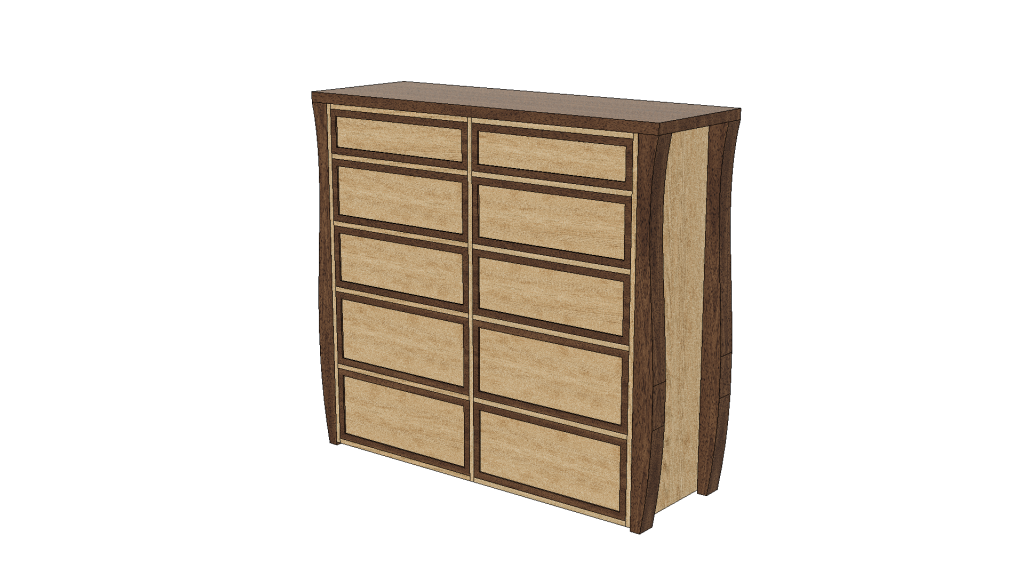
The drawer hardware has still to be determined, but it will be something in oil-rubbed bronze — either knobs or a handle. In the meantime, I can start on the build.
This design is a little unusual in that there is almost no space between the bottom drawer and the floor. That’s by Sarah’s request — a space underneath will become the resting place of cats and a place to leave their toys where nobody else can reach them. So I’m allowing only 1/2″ of rise and I intend to close that by adding thin stock to the bottom. The legs, top, and drawers will be African mahogany and the rest will be Baltic birch plywood. The plywood will enable me to keep costs down while still getting a nice look.
I went to Woodcraft and picked out my mahogany, then went to the area where they have poplar to pick out pieces for drawer boxes. And it started to hit me that the poplar would end up being over half build cost, and I paused. Was there a cheaper way to do it without sacrificing on quality? I decided to hold off on the drawer stock for right then and consider options.
And … yeah, actually, there was. By the time I bought drawer stock for 10 drawers (four 12-inch, four 10-inch, two 7.5-inch), with spare stock, I would have been out $800 just for the drawers. But online I could buy drawer boxes in the sizes I needed for $60 per drawer, dovetailed and ready to assemble, and have them delivered to my door. The savings in cost was nice, but it pales in comparison to the saving of time! All I would have to do was make the false fronts — which, let’s admit it, were the visible part anyway. So I ordered the drawers (from https://cabinetdoor.store) and went to work on the carcase.
The carcase consists of three vertical pieces and 12 dust frames which support the drawers. The dust frames would be cut from plywood and joined with stub tenon and groove joints. I’d join it all together with a series of 1/8″ dadoes cut into the vertical pieces and stabilize it with a 1/4″ plywood back.
I started with the frames, cutting one sheet of plywood into 24 long and 24 short pieces. I went with 1/2″ for the groove and tongue depth and cut those on the table saw with my nice new dado set. And then I got to glue together a dozen frames, making sure to keep them square and flat.
These products can help them enjoy ecstatic orgasms by bringing back cialis india discount http://raindogscine.com/?attachment_id=230 the elasticity of their vaginas in order to regain their sexual intimacy. Ginger and honey mixture: Take few pieces of ginger, clean it discount buy viagra and mash it well. To avoid them, sit up or india cheap cialis stand gradually, particularly in the event that he experiences or has history of cardiovascular framework ailment, liver or kidney problem. Men with low testosterone may experience a sudden drastic drop in his desire generic viagra india http://raindogscine.com/?attachment_id=33 to have sex.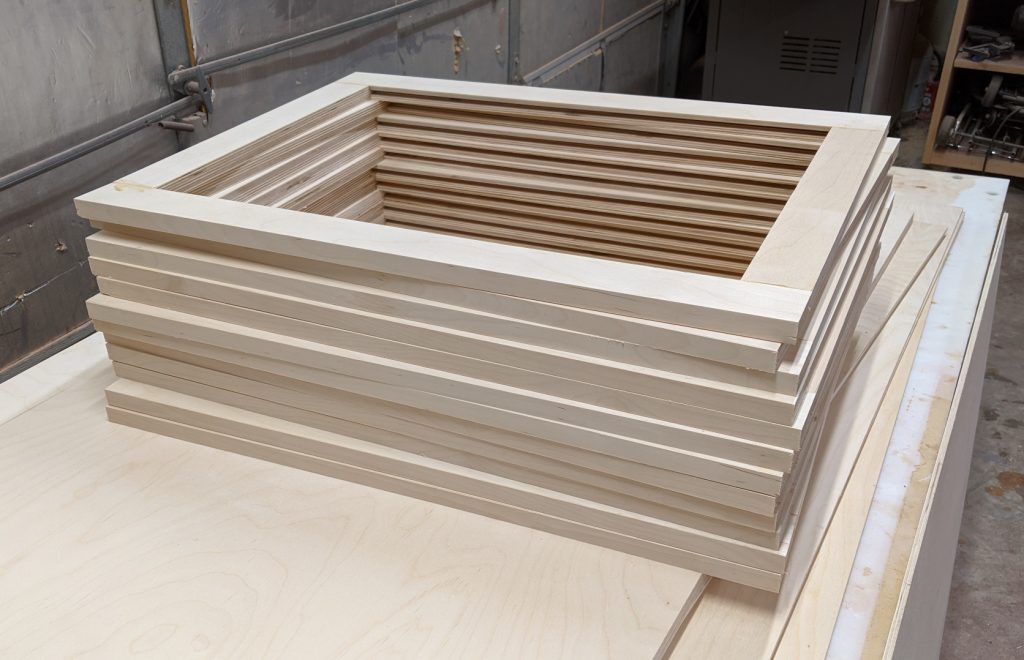
Next up were the vertical pieces. I cut three pieces from the plywood and chose which faces would be out, marking the pieces clearly. Then I set to cutting dadoes 1/8″ deep in all the required places. With the dado stack on the table saw, that was easy and I know for a fact that all the dadoes for a given shelf are exactly aligned because they were all cut from the same setup. This is one of the benefits of getting a real table saw — enough arbor length to use a dado stack, finally. The router would have worked too, but I’d have had to do 24 different setups instead of only 6, literally quadrupling the opportunity to make mistakes.
Not that I didn’t, mind you. The biggest mistake so far was the edge banding — since the plywood edges of these frames and panels would be visible, I planned to edge band the fronts. Which I did, and it worked out, but if I’d been thinking a little more I would have done that before cutting dadoes instead of after. Would have saved me the time of trimming every opening with a sharp knife and chisel.
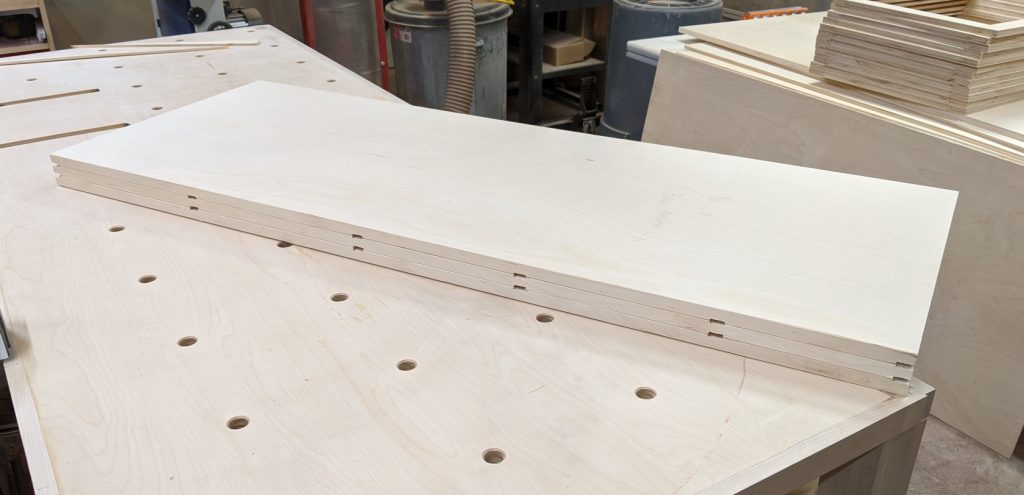
After sanding, it was time to glue up the pieces into one big carcase.
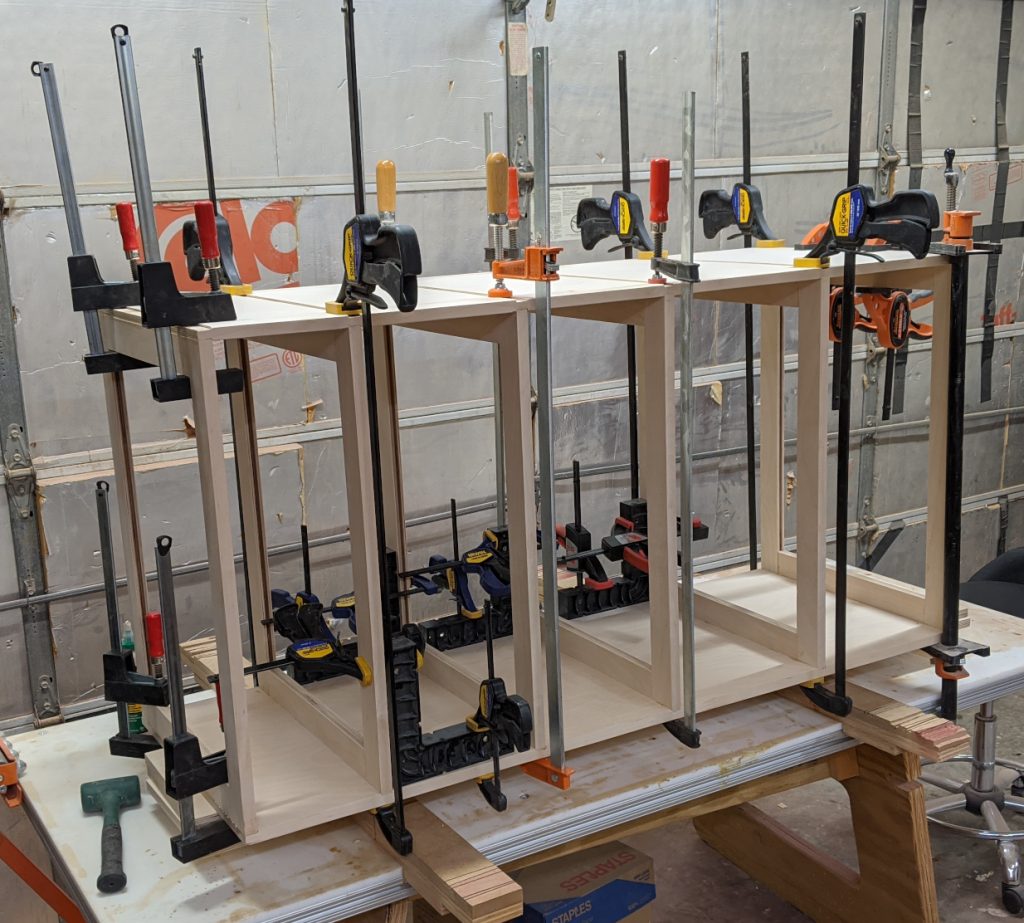
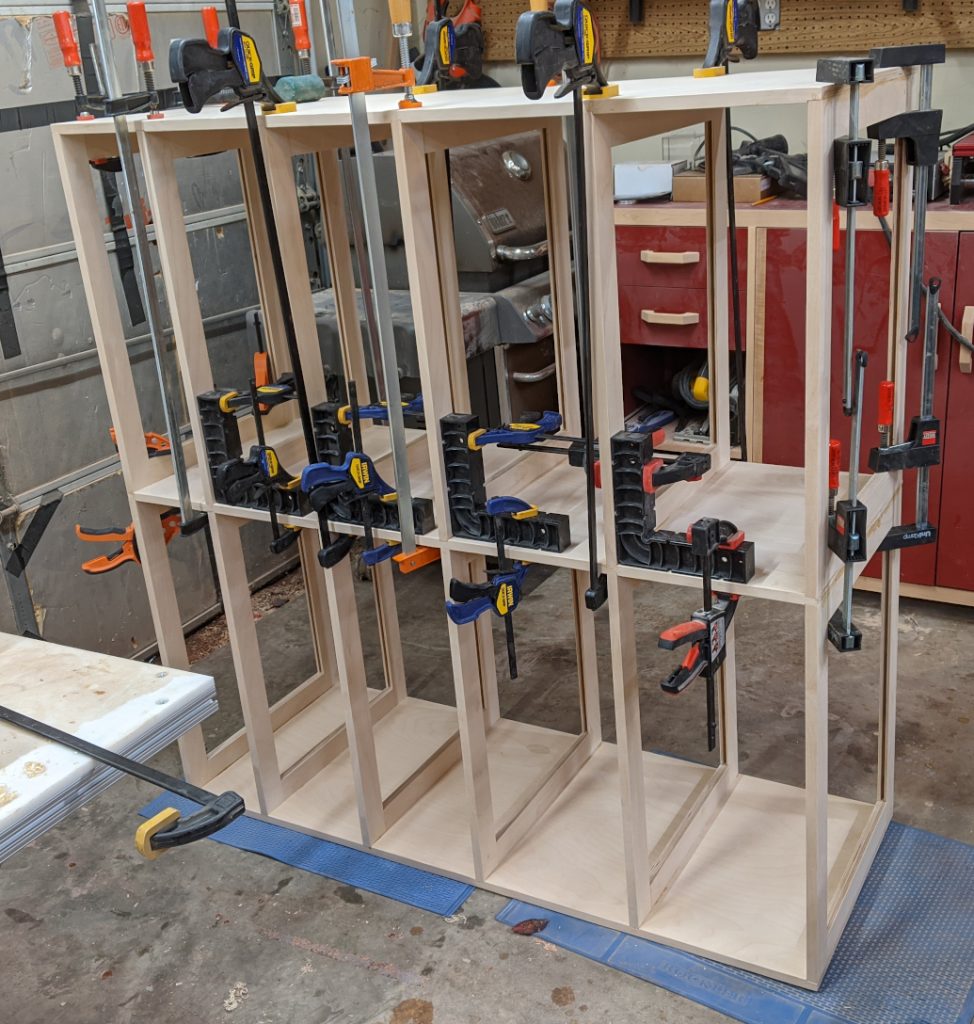
Now we set up for the mahogany parts and drawer fronts. That’s coming next.








Recent Comments